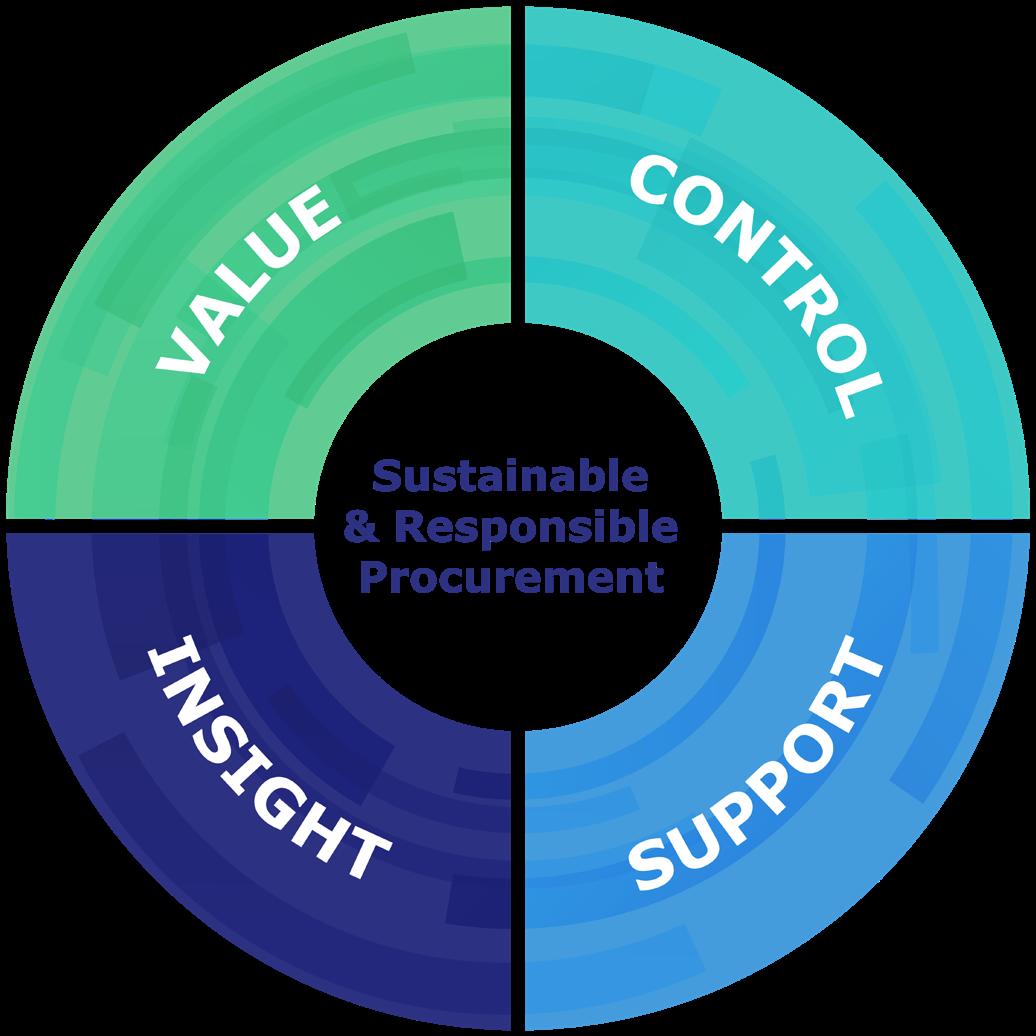

allmanhall’s guide to reducing financial cost and the carbon impact of food waste within schools
The cost of catering, and specifically food, constitutes a significant element of an independent school’s budget.
In an era of unprecedented food inflation, coupled with an increasing focus on cost reduction and achieving value for money within the sector – it is vital that schools take action to tackle food waste.
This guide has been created to give guidance and to help schools do just that!



allmanhall’s guide to reducing the financial cost & the carbon impact of food waste within schools
An introduction from

Hayden Hibbert
Client Relationship Director at allmanhall, food procurement experts
“When one considers that nearly a third of all food produced in the world is wasted and never eaten, Bursars and School Managers can ill afford to allow a third of their food budget to be diverted straight into the bin.
Financial considerations are not the only issue – food production and consumption are responsible for around 30% of global carbon emissions, and agriculture contributes to between 60%-80% of biodiversity loss.
So, reducing food waste really does matter!
This guide from the team at allmanhall outlines key areas where food waste occurs in schools and highlights key questions that Bursars and School Managers should be asking their Catering teams.
We also offer some practical tips on how to reduce waste, save money and support your sustainability commitments.”



Supply Chain
Food waste occurs at throughout the supply chain, not just in the dining hall. It is therefore important to review each stage of the journey of your school’s food, aligning with the much used adage ‘farm to fork’.
Suppliers

Is your catering team regularly reviewing the school’s food suppliers? Ideally suppliers should be accredited and their pricing benchmarked. Working with a procurement specialist can support this due diligence and ensure that the products purchased represent best value for money. Afterall, paying over the odds for products and produce is a form of waste.
If your catering is outsourced to a contractor, what is their waste management policy? Is this evidenced in practice, and have you had their suppliers’ pricing reviewed? They are external operators ordering food with your school’s budget – so excessive food spend, and wastage will not necessarily affect their bottom line.
Placing orders
It is important to adhere to a disciplined ordering process, to ensure that a ‘pre-defined shopping basket’ is followed, and that this reflects the optimum balance between quality, cost and yield. Remain mindful that many suppliers’ focus will be to sell you the highest volume of products with the largest margins, regardless of your budgetary restraints.
Avoid overbuying stock by only purchasing what you need. This is especially important when it comes to perishable products. There is always a temptation to stock up, just in case of delivery issues in the food supply chain and in times of uncertainty. Ensure you are buying the correct units of measurement for your needs, whilst being mindful that ‘split’ units can cost more than bulk cases.
allmanhall’s guide to reducing the financial cost & the carbon impact of food waste within schools
Delivery and storage
Ensure deliveries match orders by utilising a delivery schedule to check and record that you only accept exactly what you ordered, and that the products are well within their use by date and undamaged. Adequate storage is essential, and often a real challenge for school caterers. Capital expenditure on additional temperature-controlled storage units can deliver a return on investment over time, as this supports efficient purchasing and extends the shelf life of products.
Once delivered, ensure that products are stored correctly. Are you confident that all food is being stored at the correct temperature? And that fridges and freezers are operating at the correct temperatures? Rotate stock appropriately, especially your perishable items: the simple rule is FIFO, or ‘first in first out’.
If food is decanted for storage, it should be into certified food safe containers. Make sure they are clearly labelled with allergens, date information and a product description. Keeping stock organised makes it much easier to keep track on what you have and what needs using. It also helps reduce the chance of unlabelled containers from simply being thrown away in error.



Operational Processes

Waste management policy
Compile a waste management policy and incorporate it into the training and induction procedures for the catering team, and any other staff who have responsibilities for the preparation, service, transportation, and disposal of food. This includes porters and dining hall supervisors.
This could be aligned with an existing HACCP food safety policy which identifies Critical Control Points where risks of contamination can occur.
Menu engineering
Review existing menu cycles. Typically, these are often published well in advance in 3-week cycles and contain details of multiple dishes. For example, a pre-defined ‘soup of the day’. This method impedes flexibility and does not support efficient waste management.
Employing shorter menu cycles with less detail will allow the chefs to be more nimble in their production techniques. For example, taking advantage of supplier promotions and making the most of seasonal ingredients to create a ‘chef special’ or creating a soup of the day.
Skills and innovation
A skilled and qualified chef team is essential in using their knowledge and experience to deliver smarter dishes, making optimal use of ingredients and reducing waste. They will have innovative ideas on the reuse of ingredients where appropriate, such as creating vegetable stocks from peelings and stalks, crumbs and croutons from stale bread, or surplus chickpea water (aquafaba) which is a great alternative to egg whites and can create the most astonishing vegan and allergen free meringues and mayonnaise.
allmanhall’s guide to reducing the financial cost & the carbon impact of food waste within schools
Portion Control
Make sure portion specifications and weights match the requirement of your pupils – based on age group and historic take up of previous meals, all of which should be recorded. If unsure, consult with a dietitian to benchmark what is an appropriate portion allowance. Control the service of portions if possible… at the very least those expensive protein elements! Offer reusable salad bowls and soup mugs/bowls with specific volume capacities.
Employ a batch cooking methodology within the kitchen, which minimises over production, and maintains freshness and quality. Breakfast typically presents a waste risk.
So, it’s important to prepare food to order as much as possible and to record the actual per head up-take. This should be done on a daily basis.
Equipment and kit
Introducing a range of modern and technologically advanced equipment will ultimately deliver a return on investment, by reducing waste and energy consumption and saving on labour costs. Combi ovens use less energy and achieve less cooking time. And induction appliances are up to three times more efficient than gas stoves and up to 10% more efficient than conventional smooth top electric ranges.
Blast chillers can extend the shelf life of cooked food through rapid chilling and also help reduce food waste by allowing you to safely store leftovers for longer periods without compromising quality. High precision food processing machines, such as those available through the Robot Coupe range, reduce waste through efficient preparation of whole ingredients.

Catering Controls Platform
Does your catering team utilise a catering software platform, or is everything recorded on disparate excel sheets, bits of paper and notepads or in their heads? All medium to large catering operations should be using a CCP. This will enable complete control and transparency of costs. All supplier purchases can be placed via the platform and be linked to predefined ‘shopping baskets’ as mentioned before. Live supplier pricing and the line-by-line recording of all orders will allow them to track all goods received.
Stock audits should be conducted, which will then produce an accurate cost of use and will identify stock level anomalies and potential wastage or even pilferage. It is also possible to input menu cycles with up-to-date costed dishes. This includes the reporting of allergens and nutritional content. Stock transfers between cost centres can be tracked and wastage recorded.
Measure, act and reduce
It is important to measure the progress of waste reduction initiatives. This can be done through the isolating, weighing, measuring and recording of food waste at different points of delivery, storage, production and service.
For example, is food left over on the hot servery due to over production? Is it being scraped off plates from the dining hall and due to over portioning? Or is it being returned from hospitality functions due to over ordering by those requisitioning non-core food requirements? This exercise should be conducted over a specified period of time to identify where the most waste is generated.
Remedial actions can then be implemented and the exercise repeated to assess progress. Ongoing monitoring here is key.
schools
Engagement and communication
Pupils
Once improved processes, procedures and recommendations are in place, the school community should take a responsibility in helping to reduce waste. With pupils this will be mainly linked to plate waste and will be managed in part by control of portioning. However, pupils should be encouraged to contribute initiatives and ideas to a school-wide approach to waste reduction. For example food committees and assemblies are ideal forums to engage with pupils.
Translating the volume of waste into the equivalent tonnes of Co2 is a good way of communicating the importance of reducing waste to pupils. It makes it apparent how their actions directly contribute to positive commitment to sustainability and the planet.
Publishing a tracker of how waste is reducing will demonstrate positive progress and drive further action, including an increasingly shared mindfulness of the food that is being left over on plates.




Staff
It is important to clarify the quantity and frequency of food allowance that staff are entitled to. It is after all a tangible benefit. However, behaviour and defined practices can slip and it can become the ‘normal expectation’ for staff to take food when they may not be entitled to do so. This could be joining breakfast or even meal services, or indeed taking food away with them. Production will increase to meet this unjustified demand and, over time, this additional cost can become very significant.
Hospitality and non-core feeding should be reviewed and assessed. There will be a variety of staff at the school with budget allowances for catering. They should be accountable for what they are requisitioning. Often catering requests are submitted without accurate guest numbers confirmed, or an inappropriate catering offer is prepared based on individual opinion or preferences. For example, placing a request for 200 coffees, juice, water and pastries for a coffee morning, and only 50 guests turn up. Or, requesting a hot finger buffet for a parents’ evening when, in reality, the timing of the event means that the visitors have either eaten before they arrive or plan to eat elsewhere afterwards.
Resources and links
Guardians of Grub Toolkit
Food procurement expertise and foodservice consultancy
The Waste and Resources Action Plan (WRAP)
In summary, these practical tips can help to reduce waste, save money and support your sustainability commitments.
Address each of these 3 areas for best results:
- supply chain - operational processes - engagement & communication
Make sure suppliers are accredited, well managed / reviewed and regularly benchmarked.
Put in place a waste management policy, ideally aligned to HACCP
Ensure a disciplined ordering process and use a delivery schedule
Storage solutions should be adequate, correct, organised and enable stock rotation (FIFO!)
Design shorter and more flexible menu cycles, making sure your chefs are skilled to innovate
Control portions
Investment in equipment and skills can increase efficiency and pay for itself
Use a catering controls platform
“What gets measured gets managed!” - measure, identify, improve, re-measure etc
Engage and involve the school community and communicate progress
Review behaviour and ensure accountability

Support available from allmanhall

Your catering operation could benefit from food cost savings and also make a positive impact when it comes to sustainability. All by reducing waste in very achievable ways!
As food procurement experts and foodservice consultants, allmanhall provide practical advice and support, gleaned from hands-on experience.
Please do contact us if you need support achieving your cost saving, waste reduction and sustainability goals.


Hayden Hibbert Client Relationship Director
allmanhall.co.uk
hayden.hibbert@allmanhall.co.uk

allmanhall are delivering sustainable value: because good food shouldn’t cost the Earth
